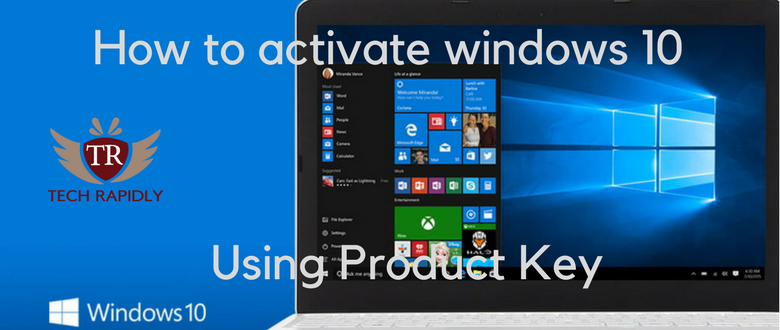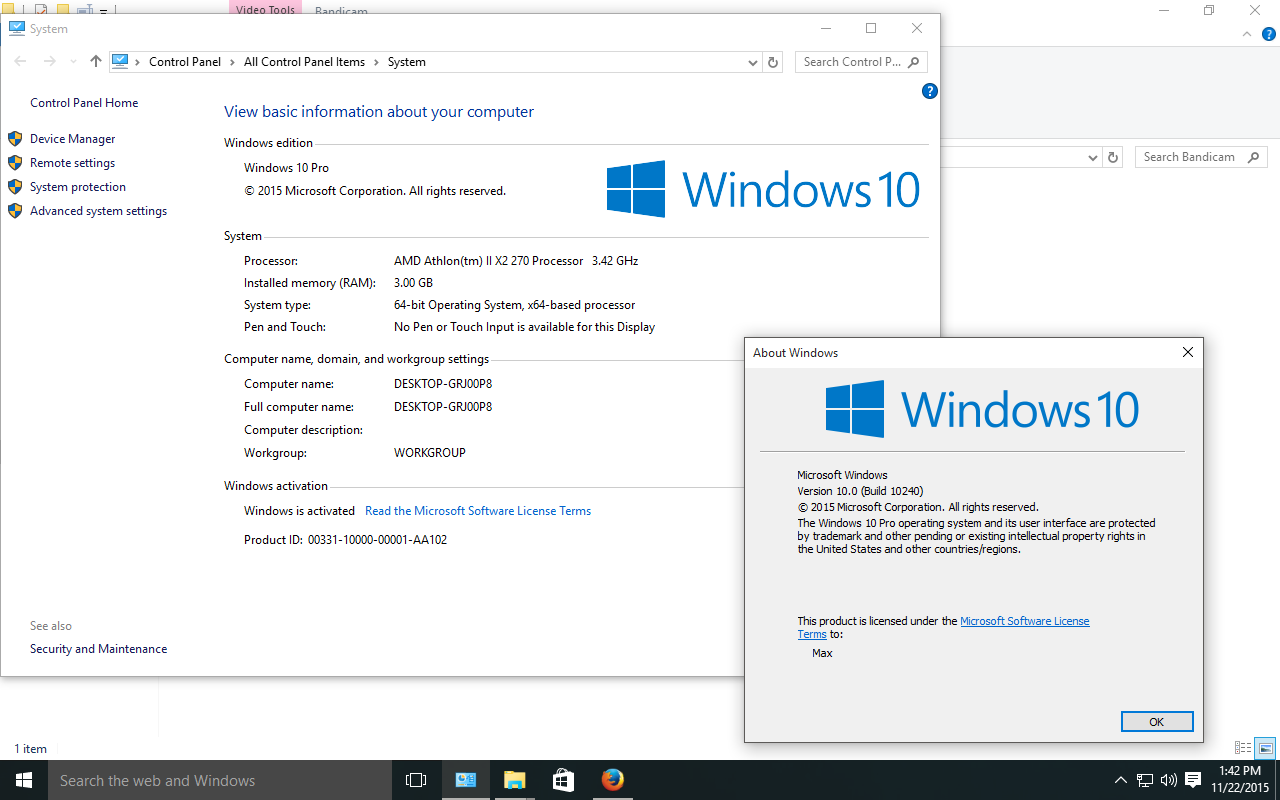What is the Importance of activating Windows 10 in 2018? (Windows 10 without product key)
※ Download: Windows 10 without activation
Same if you went from home to pro, or vice versa. When I upgrade to windows 10 from 8. Probably it was been deleted after I format and deleted all the partition of my HDD.

Click Yes and Open CMD. First, What is the Importance of enabling Windows 10? The method 1 end with error: Error: 0xC004F074 The Software Licensing Service reported that the computer could not be activated. KMS clients which have successfully activated with the KMS host must renew their activation at least once every 180 days.

What is the Importance of activating Windows 10 in 2018? (Windows 10 without product key) - The catch is that few people see Microsoft putting the pieces together. Thank you very much, simple and easy, apreciate it.

Windows product keys are almost but not quite a thing of the past. With Windows 10, Microsoft has rewritten the rules for how it performs product activation on retail upgrades of Windows, including the free upgrades available for a year beginning on July 29, 2015. The net result is that clean installs will be much easier--but only after you get past the first one. OEM activation hasn't changed, nor have the procedures for activating volume license copies. But the massive means that for the near future at least those retail upgrade scenarios are very important. After you successfully activate Windows 10 for the first time, that device will activate automatically in the future, with no product key required. That's a huge change from previous versions of Windows, which required a product key for every installation. And it's potentially an unwelcome surprise for anyone who tries to do a clean install of Windows 10 without understanding the new activation landscape. Microsoft is characteristically shy about discussing the details of activation. That's understandable, because every detail the company provides about its anti-piracy measures offers information that its attackers can use. But it's also frustrating, because Microsoft's customers who use Windows don't want to have to think about activation. The Windows PC you paid for, and the free upgrade you spent time installing, should just work. I've had some way-off-the-record discussions with people who know a few things about the subject, and I've also done my own testing for the two weeks since Windows 10 was released to the public. Here's what I've learned. Your Windows 10 license is stored online and linked to your device. For more than a decade, one of the keys that Microsoft's activation servers have relied on is a unique ID, which is based on a hash of your hardware. That hash is reportedly not reversible and not tied to any other Microsoft services. So although it defines your device, it doesn't identify you. Here's how that ID works with Windows 7 or Windows 8: When you activate for the first time, that hashed value let's call it your installation ID is recorded in the activation database alongside the product key you entered with the installation. Later, when you reinstall the same edition of Windows on the same hardware, with the same product key, it's activated automatically. Conversely, if you try to use that product key on a different machine with a different hardware ID, you'll probably be denied activation. See update at the end of this post. Windows 10 goes one very large step further. When you upgrade from Windows 7 or Windows 8. It didn't need a product key to do that activation. All it needed was the proof from the Software Licensing Manager utility that your underlying activation was legit. You can now wipe that hard disk completely, boot from Windows 10 installation media, and install a squeaky clean copy. The Setup program asks you to enter a product key, but in a major change from Windows 8 and 8. You'll be asked to enter that key a second time, later in setup, but you can skip past that box as well. When you finish the reinstall, assuming you used the same Windows 10 version on that hardware, you'll find it's automatically activated. I've tested this scenario on multiple machines, and the result has been consistent: Step 1: I booted from Windows 10 installation media, a USB flash drive prepared by the Windows 10 Media Creation tool, and tried a clean install on a system that had never been activated for Windows 10. I skipped both prompts to enter a product key. My system failed activation. Step 2: I reset the machine with its original, activated copy of Windows 7 or Windows 8. At the end of the process, I confirmed that Windows 10 was properly activated. Step 3: I then wiped the hard drive clean and used the exact same media as in Step 1 to do a clean install of Windows 10. As before, I skipped the product key entry. I used a Microsoft account in one test and used a local account in another. After the installation was complete, the system showed that it had a properly activated copy of Windows 10. You can, of course, buy a full or OEM copy of Windows 10 on a flash drive, and you can also buy product keys online. You can use that product key to do a clean install on a system that has never run Windows 10 and it will get a license certificate from the activation servers. And just like those upgraded PC, it should then allow you to do a clean install of the same Windows 10 edition without having to re-enter the product key. For those who are anxious to do a clean install, here's the trick: Don't do the online upgrade. Instead, from your current, activated copy of Windows 7 or Windows 8. Without exiting your current Windows version, double-click the ISO to mount it as a virtual DVD or open the USB flash drive with installation media and then double-click Setup. Your goal is to get to the screen with this full range of options: Windows 10 is a key part of Microsoft's plan to be more of an Internet of things player. The catch is that few people see Microsoft putting the pieces together. Choose the option I've highlighted at the bottom: the one that says you want to keep nothing. The Windows 10 Setup program installs a clean copy of the edition that corresponds to the one you have installed. As part of the process, it verifies the activation status of your old Windows, creates the new license certificate, and blows away your previous install. And you never had to enter a product key. After you restart, your clean copy of Windows 10 is activated, and you can reinstall it any time without having to worry about activation. And you'll never need a product key again. That's all well and good for those who are currently running Windows 7 or Windows 8. But what about those who did a clean install of a preview edition, never upgrading over a licensed copy? You can skip the product key during installation, but when you're done with Setup your system will be marked as not activated. You won't be able to use any personalization options, and you'll have a persistent watermark on the desktop warning you that you need to activate. I honestly have no idea how the telephone activation hotlines will respond to calls from Insiders who want to activate a copy for the first time. This is new territory for Microsoft and for its customers. Update: In the comments, several people have asked what happens if you make changes to hardware. As I noted earlier, Microsoft doesn't provide details of how it calculates that hardware hash, but upgrades of system components such as a video card or a hard drive won't normally trigger a reactivation. If that happens, a quick call to the activation line will resolve the issue, often without any human contact required, in minutes. The one exception is a motherboard replacement, which will inevitably cause the Software Licensing Management utility to recognize the device as a new PC and require reactivation, typically over the phone. A motherboard upgrade, even if you reuse storage, video, memory, and a case, is considered a new PC. In that case, if the underlying Windows license is from a retail copy, that license can be transferred. If you are upgrading and not replacing a motherboard on an OEM PC that was sold with Windows preinstalled, the license agreement prevents the license from being transferred. By registering you become a member of the CBS Interactive family of sites and you have read and agree to the , and. You agree to receive updates, alerts and promotions from CBS and that CBS may share information about you with our marketing partners so that they may contact you by email or otherwise about their products or services. You will also receive a complimentary subscription to the ZDNet's Tech Update Today and ZDNet Announcement newsletters. You may unsubscribe from these newsletters at any time.
This option may not be available in all countries. After connecting to the Kms. The prices here are for the US version of the Windows Store. Finished the last step, rebooted and doubled checked to make sure it was still valid and it was. But is there any time period till which I can only use unactivated Windows or I can use it forever. Your goal is to get to the screen with this full range of options: Windows 10 is a key part of Microsoft's plan to be more of an Internet of things player. By registering you become a member of the CBS Interactive family of sites and you have read and agree to theand.



